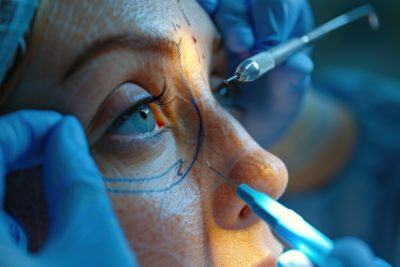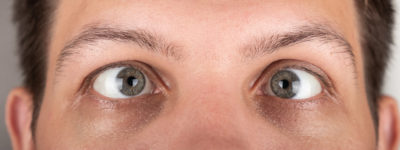Sjogren’s syndrome, pronounced SHoW-grins, is an autoimmune disorder characterised by two primary symptoms: dry eyes and a dry mouth. It frequently coexists with other autoimmune conditions like rheumatoid arthritis and lupus. In Sjogren’s syndrome, the initial impact is typically on the mucous membranes and glands responsible for producing moisture in the eyes and mouth, resulting in reduced tear and saliva production.
While Sjogren’s syndrome can develop at any age, it is most commonly diagnosed in individuals over the age of 40. The condition is notably more prevalent among women. Treatment primarily focuses on alleviating the associated symptoms.
Symptoms of Sjogren’s Syndrome
Sjogren’s syndrome can manifest in a variety of ways, affecting different parts of the body. Here, we’ll break down the common symptoms associated with this autoimmune disorder:
1. Dry Eyes (Xerophthalmia)
One of the main symptoms of Sjogren’s syndrome is dry eyes. This condition is known as keratoconjunctivitis sicca, occurs when the glands that produce tears become inflamed and do not function properly. Individuals with Sjogren’s may experience a gritty or burning sensation in their eyes, blurred vision, light sensitivity, and a persistent need for eye drops.
2. Dry Mouth (Xerostomia)
Another prominent symptom is dry mouth, or xerostomia. The salivary glands are affected, leading to a decrease in saliva production. This can result in difficulty swallowing, speaking, or tasting food, as well as an increased risk of dental issues such as cavities and gum disease.
3. Joint Pain and Fatigue
Sjogren’s syndrome often coexists with other autoimmune conditions, such as rheumatoid arthritis or lupus. Joint pain and stiffness are common complaints among individuals with Sjogren’s. Chronic fatigue is another significant symptom, which can be debilitating and have a profound impact on daily life.
4. Skin and Vaginal Dryness
Dry skin and vaginal dryness are less commonly discussed but still important symptoms of Sjogren’s syndrome. Dry skin can lead to itching, redness, and flaking. Vaginal dryness may result in discomfort during sexual intercourse, and increased susceptibility to infections in the genital area.
5. Swelling and Pain in Salivary Glands
Some individuals with Sjogren’s syndrome experience swelling and pain in their salivary glands, particularly those located around the jaw and ears. These symptoms can come and go and may be triggered by eating or drinking.
6. Respiratory and Digestive Issues
In severe cases, Sjogren’s syndrome can affect other organs, including the lungs and digestive system. Respiratory symptoms may include a persistent dry cough and shortness of breath, while digestive issues can manifest as difficulty swallowing or heartburn.
7. Neurological Symptoms
Sjogren’s syndrome can also affect the nervous system, leading to symptoms such as numbness, tingling, and weakness in the extremities.
8. Systemic Complications
Beyond the symptoms directly related to dryness, Sjogren’s syndrome can lead to more serious complications, including an increased risk of lymphoma (a type of cancer) and lung disease.
Diagnosis and Medical Evaluation
Diagnosing Sjogren’s syndrome can be challenging, as its symptoms can overlap with other conditions. Healthcare providers typically conduct a thorough evaluation, which may include:
-
Blood Tests
These can detect specific antibodies and proteins associated with autoimmune diseases.
-
Imaging
Salivary gland imaging and biopsies may be performed to assess glandular damage.
-
Eye Tests
ophthalmologists can assess tear production and eye health.
-
oral Examinations
Dentists often play a crucial role in evaluating oral symptoms.
Treatment options
While there is no cure for Sjogren’s syndrome, there are several approaches to manage its symptoms:
-
Artificial Tears and Moisturizers:
over-the-counter eye drops, gels, and mouthwashes can provide relief from dry eyes and mouth. Humidifiers can be used to maintain moisture levels indoors.
-
Prescription Medications:
In cases with significant inflammation, healthcare providers may prescribe anti-inflammatory drugs like corticosteroids or immune-suppressing medications.
-
Saliva Stimulants:
Sugar-free gum, lozenges, and medications that stimulate saliva production can alleviate dry mouth symptoms.
-
Pain Management:
Joint pain and fatigue may be managed with pain relievers, physical therapy, and lifestyle modifications.
-
Systemic Treatments:
Disease-modifying antirheumatic drugs (DMARDs) or biologics may be considered for those with systemic complications.
-
Regular Monitoring:
ongoing medical supervision is crucial to adjust treatment plans as needed and monitor for complications.
Living with Sjogren’s Syndrome
The journey of living with Sjogren’s syndrome can be daunting, both physically and emotionally. Individuals may face a range of challenges, from managing daily symptoms to navigating the complexities of treatment. It’s essential to acknowledge the emotional toll of the condition and seek the support of healthcare professionals and support groups.
What are the Causes?
The exact cause of Sjogren’s syndrome is not fully understood, but it is believed to involve a combination of genetic, environmental, and immunological factors. Here are some key factors that may contribute to the development of Sjogren’s syndrome:
-
Autoimmune Response:
Sjogren’s syndrome is classified as an autoimmune disorder. In autoimmune diseases, the immune system mistakenly recognizes the body’s own tissues as foreign invaders and attacks them. In the case of Sjogren’s, the immune system targets the moisture-producing glands, such as the salivary and lacrimal glands (glands responsible for producing saliva and tears).
-
Genetics:
There appears to be a genetic predisposition to Sjogren’s syndrome. Certain genetic markers and family history of autoimmune diseases can increase the risk of developing the condition. However, having a genetic predisposition does not guarantee that someone will develop Sjogren’s.
-
Hormonal Factors:
Hormones, particularly oestrogen, may play a role in the development or exacerbation of Sjogren’s syndrome. This is supported by the fact that the condition is more common in women, especially those who are postmenopausal.
-
Environmental Triggers:
Some environmental factors, such as viral infections, may trigger the onset of Sjogren’s syndrome in individuals with a genetic predisposition. Epstein-Barr virus and hepatitis C virus have been studied in this context.
-
Immunological Abnormalities:
Sjogren’s syndrome is associated with various abnormalities in the immune system, including the production of autoantibodies. These autoantibodies, such as anti-SSA (Ro) and anti-SSB (La) antibodies, are often present in individuals with the condition.
-
Other Autoimmune Diseases:
Sjogren’s syndrome frequently coexists with other autoimmune disorders, such as rheumatoid arthritis, lupus, or scleroderma. It is possible that common factors or genetic predispositions contribute to the development of multiple autoimmune conditions in some individuals.









